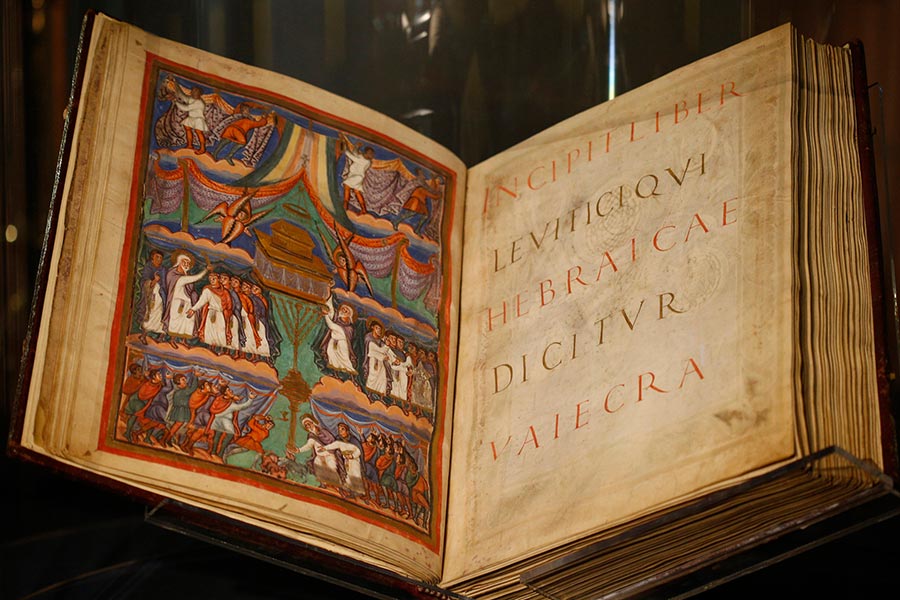Science expressed in the Bible

The Bible of St. Paul Outside the Walls, dating from the 9th century, is displayed at the Vatican. The Bible is a love letter from God to humanity, not the final thoughts of scientific progress. (CNS photo/Paul Haring)
The Bible is a love letter from God to humanity, not the final thoughts of scientific progress. It was written at specific moments that reflect our understanding at those times. These "freeze-frames" of understanding are not unique to the Bible.
Isaac Newton's scientific understanding of the world inspired humanity to do great things until the limitations of those understandings were discovered and his theories needed assistance.
Then Albert Einstein, and minds like his, solved these problems and incorporated new knowledge into new science. This process is still evident as we see problems arising in their scientific understanding, for example, the reality within black holes or the moment of the Big Bang.
It would be inaccurate to suggest that the science of the Bible, or Newton, or Einstein contradicts the reality in which we live; it only suggests that none are the final thoughts of scientific progress.
That being said, the science expressed in the Bible is not the reason for its existence. It exists to express God's love for us and to determine what he expects of us. We do this by focusing on those larger and deeper conversations between God and humanity within Scripture and interpreting their meanings to the best of our ability.
St. Thomas Aquinas suggests four ways to interpret Scripture: literal, allegorical, moral and anagogical. A literal interpretation limits us to view the contents of the Bible from a single view and to take what we can from it.
Science is limited to this interpretation because it only attempts to express a physical reality that exists in the greater context of scriptural teaching.
For example, Hebrews 11 is arguably the most eloquent teaching on faith in Scripture. Hebrews 11:3 uses as an example of faith a simple understanding of atoms, "What is visible came into being through the invisible," or what we see is made of things we cannot see.
While accurate, read alone it is vague and does not reap the benefit of the rich and multifaceted fourfold approach of St. Thomas that can be applied to the greater story of Scripture.
As a common example, look at the story of Abraham intending to sacrifice Isaac on the mountain. A literal interpretation limits us to focus on the story as an historical event — Isaac walking up Mount Moriah with the wood for his sacrifice — and one might be appalled that a father would try to kill his son.
As an allegory, we add depth to this story as we see Isaac as a prefigurement of Jesus as he walks the Via Dolorosa to Calvary carrying the wood for his own sacrifice. A moral interpretation adds more to the story as we understand the importance of obedience and faith in God's will.
And, finally, anagogically, we realize how sacrifice prepares us for the eternal glory that is promised to us. The science expressed in the Bible does not have this depth.
Science progresses and our understanding of it changes. What does not change is the truth of the Bible's purpose: to know of God's love for us and to determine what he expects of us.
By Deacon Andrew Dutko, Catholic News Service
Deacon Andrew Dutko is a transitional deacon studying for the priesthood for the Diocese of Paterson, New Jersey. He managed the Princeton University Advanced Physics Lab from 2000-2006. He has degrees in mathematics and business.
